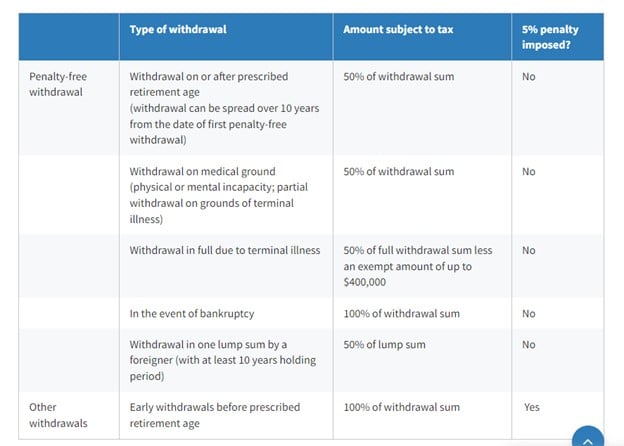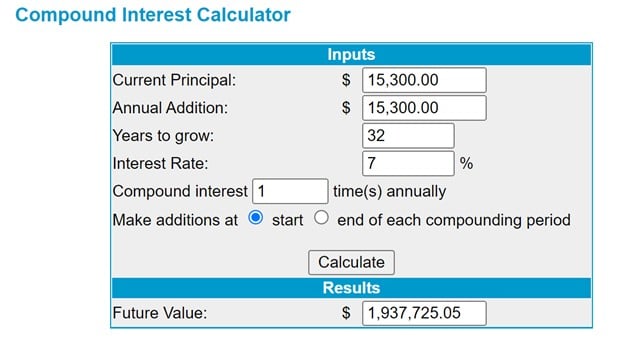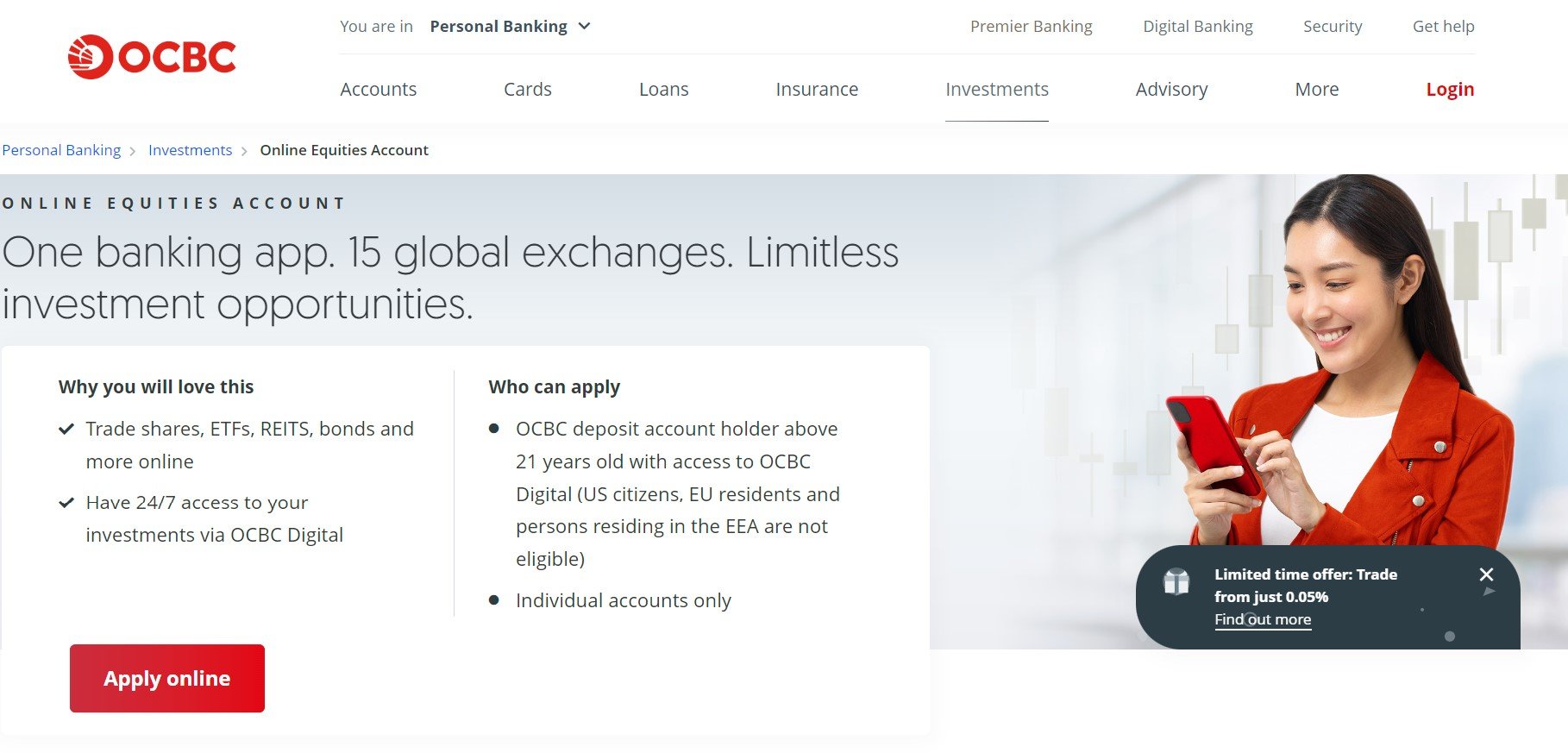It’s that time of the year again!
For those of you who are keen to top up your Supplementary Retirement Scheme (SRS) – don’t forget to top up by 31 December 2023 if you want to enjoy the tax relief.
Note that the other big alternative to SRS for tax savings is CPF topups.
But that’s only applicable if you (or your loved ones) are below the current Full Retirement Sum (FRS).
And given risk free T-Bills are paying 3.74% these days, you may argue the interest rates on CPF looks a lot less attractive.
So comparatively, SRS as a method of tax relief starts looking pretty attractive relative to CPF topups.

Basics: What is Supplementary Retirement Scheme (SRS)?
From the IRAS website, emphasis mine:
The Supplementary Retirement Scheme (SRS) is a voluntary scheme to encourage individuals to save for retirement, over and above their CPF savings.
Contributions to SRS are eligible for tax relief.
Investment returns are tax-free before withdrawal and only 50% of the withdrawals from SRS are taxable at retirement.
What is the benefit of Supplementary Retirement Scheme (SRS)?
The main benefit of SRS – Income Tax Relief.
Basically, Singapore Citizens / PRs can top up $15,300 a year into SRS, and the amount topped up is fully exempt from income tax.
Yes – you pay absolutely no income tax on the amount that goes into your SRS account that year.

However, do note that for each Year of Assessment, a personal income tax relief cap of $80,000 applies to the total amount of all tax reliefs claimed (including relief on SRS contributions).
Also note that the $15,300 cap is for Singapore Citizens or Permanent Residents, while Foreigners can top up $35,700.

Is it worth it to top up your Supplementary Retirement Scheme (SRS) account for tax relief?
The short answer, is that it depends very much on your income tax bracket.
The higher your income, the more income tax you pay, and the more it makes sense to top up SRS.
But if done well, SRS can lead to very efficient tax treatment.

How Supplementary Retirement Scheme (SRS) can save you $290,000 in taxes
Just to give a very simple example.
Imagine you’re a 30 year old, in the $120,000 and above income bracket
You’re feeling very pleased with yourself with your income, and you’re paying an effective 15% tax rate on all income above $120,000.
Now let’s say you top up the max $15,300 every year starting from age 30.
That means you save $2,295 in income tax every year, that you get to invest and compound until retirement.
And let’s say you make 7% a year on the amount in your SRS account.
The amount you save on income tax, will compound at 7% a year – totalling $290,000 in 32 years.
And this is just the amount you save from income tax.
So long story short – yes, SRS can be very worth it, if you know how to use it right.
What is the drawback to using Supplementary Retirement Scheme (SRS) Account?
SRS is not without its drawbacks though.
The main limitation – is liquidity.
If you withdraw before statutory retirement age (63), you need to pay tax on 100% of the amount withdrawn + 5% penalty
If you want to withdraw any amount from your SRS Account before statutory retirement age, you need to pay:
- Income Tax on 100% of the amount withdrawn (based on your income tax bracket)
- An additional 5% penalty on the amount withdrawn
To give an example, let’s say you’re in the $120,000 tax bracket.
And you’re a bit tight on cash, so you withdraw $10,000 from your SRS account that year.
You need to pay:
- Income Tax on 100% of the amount withdrawn – 15%
- An additional 5% penalty on the amount withdrawn – 5%
So in total, you pay a 20% tax, or $2,000, on the $10,000 withdrawn.
In a way you can think of SRS as a liquidity tax.
You’re not banned from using the money, you just need to pay a penalty if you want to use it before statutory retirement age.
If you withdraw after statutory retirement age, you only pay tax on 50% of the withdrawal amount (spread over 10 years)
If you do withdraw from your SRS account after statutory retirement age though, then there is no penalty fee.
In that case, you only pay income tax on 50% of the withdrawal amount.
At this point though, you should not be earning significant income anymore, so the income tax is very low.
Or at least that’s how it should work in theory.
So to give an example.
Imagine you retire at 63, and your income drops to zero.
Then you withdraw $40,000 from SRS that year.
You only pay income tax on 50% of that – which is $20,000.
And the first $20,000 of income pays 0% tax, so you pay absolutely no tax on the withdrawal from your Supplementary Retirement Scheme (SRS) account.

There are other situations where you can withdraw the money, for example on medical grounds, or terminal illness.
I set out the screenshot below for your reference.

Who should top up their Supplementary Retirement Scheme (SRS) Account?
Okay, now comes the very interesting part.
Who should top up their SRS Account?
My view, is that SRS Account makes sense if:
- You have a high income
- You are close to statutory retirement age (63)
You have a high income (salary employees)
If you have a high income, SRS becomes quite tax efficient.
Whatever you top up into your SRS account, you don’t need to pay tax on.

Note that if you’re a business owner you should be more concerned about corporate tax, so SRS may be less relevant for you.
What is the income threshold where Supplementary Retirement Scheme (SRS) makes sense? (salary employees)
Now of course everybody can use SRS to save on their tax bill.
But as we discussed above, you’re sacrificing liquidity, and the ability to use your cash, when you top up SRS.
So it only makes sense if you’re saving a decent amount on tax, to make this worth it.
There is no right or wrong amount where it makes sense to use SRS, and the exact threshold will depend on each individual.
But I would say generally it only makes sense if you’re earning at least $80,000 chargeable income (11.5% income tax bracket). In which case you save $1759.5 on $15,300.
But ideally you should be earning at least $120,000 chargeable income (15% income tax bracket), and save $2,295 on $15,300.
And of course, the higher your income the more it makes sense for you.
Alternative to SRS for Tax Relief?
The other alternative to SRS for tax relief is CPF topups.
But that’s only applicable if you (or your loved ones) are below the current Full Retirement Sum (FRS).
And given risk free T-Bills are paying 3.74% these days, you may argue the interest rates on CPF looks a lot less attractive.
But really – there’s no right or wrong here.
It’s your call.

You are close to statutory retirement age of 63 years
If you are close to statutory retirement age (63), then it becomes a no brainer as well.
You can top up the money to get tax relief.
Then when you retire and your income drops drastically, you take the money out and only pay income tax on 50% of that.
And because your income should drop a lot after retirement (I’m leaving aside those who have rental income from 10 properties…), you’ll be paying income tax on a much lower tax bracket.
The closer you are to 63 years old, the more of a no brainer SRS becomes – especially if you are a higher earner.
You can just put the money into SRS for the tax relief, then withdraw it at a much lower tax rate once you retire.
BTW – we share commentary on Singapore Investments every week, so do join our Telegram Channel (or Telegram Group), Facebook and Instagram to stay up to date!
I also share great tips on Twitter.
Don’t forget to sign up for our free weekly newsletter too!
Note: Statutory Retirement Age prevailing when you topped up the SRS Account
Just a sidenote that the Statutory Retirement Age for purposes of SRS withdrawal, is the Statutory Retirement Age that was prevailing at the time of your first SRS contribution.
In plain English, this means when you first top up your SRS account, you lock in the Statutory Retirement Age on that date.
Before 1 July 2022, it was 62.
After 1 July 2022, it went up to 63, and who knows it may go up in future.
So even if you don’t plan to use the SRS account, you really should just open one and top up $1 into it today.
This helps you lock in the Statutory Retirement Age for your SRS account, just in case you want to use it in future.
SRS Accounts can be opened online in just a few minutes, so there’s really no reason to be lazy about this.

Who should NOT top up their Supplementary Retirement Scheme (SRS) Account?
Now you should NOT top up your SRS Account if:
- You need the money before retirement
- Your income is low
You need the money before retirement
If you even think there is a chance you need the money, I would say just be safe rather than sorry, and not top up your SRS Account.
So if you’re saving up for a big ticket purchase like a house, a car, a wedding etc, and you think you might need the liquidity, then don’t bother with SRS.
Just pay the income tax and enjoy the freedom to use your cash as you deem fit.
Your income is low
As discussed above, SRS sacrifices liquidity for lower tax.
It only makes sense if your income is of a certain level, and you can refer to the discussion above on what amount makes sense.
What investments should you buy with Supplementary Retirement Scheme (SRS) money?
An equally important question – is what should you buy with your SRS money?
If you top up $15,300 a year into SRS, from age 30 until retirement at 62.
And if you grow that money at 7% a year, you’re left with close to $2 million after 32 years.
So yes, it probably makes some time to think seriously about how to properly invest your SRS money.

What investments can you buy with Supplementary Retirement Scheme (SRS) money?
The kind of investments you can buy with your SRS moneys are set out below, classified by risk:
Low Risk Investments
- Fixed deposits
- Singapore Government Securities, including T-Bills and Singapore Savings Bonds (SSBs)
Moderate to High Risk Investments
- Stocks / REITs (but only SGX listed stocks / REITs)
- Exchange traded funds (but only SGX listed ETFs)
- Roboadvisors (Endowus, Stashaway, MoneOwl etc)
- Unit Trusts
- Single premium insurance products, including endowment plans. Note that the products’ life coverage (including total and permanent disability benefits) is capped at three times of the premiums.
What type of investments should you buy with Supplementary Retirement Scheme (SRS) money?
The way I see it, there are 2 types of investments you can make with your SRS.
You can buy short term, risk free investments (eg. T-Bills, Singapore Savings Bonds) to park the cash somewhere until an investment opportunity opens up (or until you hit retirement age).
Or you can buy long term equities for higher long term returns.
Which one to pick depends on:
- The number of years left until statutory retirement age – the closer to retirement you are, the more you’ll favour short term, low risk investments
- Market volatility – if you think markets are looking expensive and may crash in the short term, then you would favour short term, low risk investments
Short term, low risk investments
This one is easy.
Just buy T-Bills, Fixed Deposit, or Singapore Savings Bonds.
T-Bills have the highest yield, but you won’t be able to get the money back before maturity.
So if you want the liquidity in your SRS Funds, Singapore Savings Bonds or Fixed Deposit might be a better option.
Long Term Holdings
That being said, if you’re a 30+ year old, and your investment horizon is 30 years or more.
I don’t think you should be putting your SRS money into the low risk investments above for anything longer than a few years.
If you’re investing for a 30 year horizon, you really want to go into equities for the higher long term returns.
There are 4 main options here:
- SGX listed Stocks
- SGX listed REITs
- SGX listed ETFs
- Roboadvisors (but they do tack on fees)
I know a lot of people like to go for (4).
They use a roboadvisor to buy US listed ETFs, and just let it compound.
Personally I’m not a big fan because the roboadvisor charges fees on top of the ETFs fees, and over a 30 year period that can really kill returns.
But hey, it’s your money, your call.
Personally for me I would go with either (1) SGX listed Stocks or (2) SGX listed REITs.
I know that REITs are a bit annoying because of frequent rights issues which require you to have money in SRS in order to take up the rights.
The dividends are also paid into the SRS account and “locked up”.
I think that’s an acceptable trade-off for me as I top up my SRS each year, and just roll the money into new investments.
Investors who don’t like this could just stick with growth stocks I suppose – but your options are pretty limited on the SGX unless you go with a Robo to buy international ETF.
What would I invest in with my Supplementary Retirement Scheme (SRS) money? (Dec 2023)
What would I do today, as of Dec 2023?
I will top up my SRS account to the statutory limit for tax relief.
I’ll probably use the cash to buy REITs – as there are quite a few REITs trading at attractive valuations right now (full list shared on FH Premium).
But that’s just me.
Investors who are more risk averse, or closer to retirement, can choose to just buy Singapore Savings Bonds yielding 3%ish risk free.
Supplementary Retirement Scheme (SRS) Account – How to open an SRS Account, Who is eligible to open etc.
Couple of administrative details to discuss.
Who is eligible to open an SRS account?
Singapore Citizens, Singapore Permanent Residents (SPRs) and foreigners who derive any form of income may make SRS contributions in the current year.
How to open an SRS account?
Only the 3 local banks can open an SRS account:
- DBS Group Holdings Ltd
- Overseas-Chinese Banking Corporation (OCBC) Ltd
- United Overseas Bank (UOB) Ltd
Closing Thoughts: Supplementary Retirement Scheme (SRS) Account
And there you have it!
The Financial Horse Guide to Supplementary Retirement Scheme (SRS) Account.
I hope this was useful for you in deciding whether or not to top up your SRS Account, and what to buy with your SRS moneys.
Any other comments – feel free to share below!
For those of you who are keen to top up your Supplementary Retirement Scheme (SRS) – don’t forget to top up by 31 December 2023 if you want to enjoy the tax relief.
This article was written on 8 Dec 2023 and will not be updated going forward.
For my latest up to date views on markets, my personal REIT and Stock Watchlist, and my personal portfolio positioning, do subscribe for FH Premium.
WeBull Account – Get up to USD 5000 worth of shares (Best promo of 2023 – Now Extended)
I did a review on WeBull and I really like this brokerage – Free US Stock, Options and ETF trading, in a very easy to use platform.
I use it for my own trades in fact.
They’re running a promo now (Best Promo of 2023)
You can get up to USD 5000 free shares.
You just need to:
- Sign up for a WeBull Account here
- Fund any amount (get 5 free shares)
- Hold for 30 days (get 5 free shares)

OCBC Online Equities Account – Trade on 15 global exchanges, all via the OCBC Digital Banking App!
Did you know that can you trade shares on your OCBC Digital Banking App?
With an OCBC online equities account, you can buy stocks, local ETFs, REITs, bonds and more directly through your banking app.
Even better? Enjoy reduced commission rates of just 0.05% for buy trades on SG, US and HK market until 31 December 2023.
Everything on one app! Fuss-free funding, with access to 15 global exchanges
For SGD trades, you can fund and settle automatically via your OCBC account.
And for FX trades, you can settle using the foreign currency held in your OCBC Global Savings Account.
This means fuss-free trade settlement and minimising forex costs – saving you time and money.
Start trading with your OCBC Online Equities Account here!
Trust Bank Account (Partnership between Standard Chartered and NTUC)
Sign up for a Trust Bank Account and get:
- $35 NTUC voucher
- 1.5% base interest on your first $75,000 (up to 2.5%)
- Whole bunch of freebies
Fully SDIC insured as well.
It’s worth it in my view, a lot of freebies for very little effort.
Full review here, or use Promo Code N0D61KGY when you sign up to get the vouchers!
Investment Research Tools
I use Trading View for my research and charts. Get $15 off via the FH affiliate link.
I also use Koyfin for fundamental and macro research. Get a 10% discount via the FH affiliate link.
Portfolio tracker to track your Singapore dividend stocks?
I use StocksCafe to track my portfolio and dividend stocks. Check out my full review on StocksCafe.
Low cost broker to buy US, China or Singapore stocks?
Get a free stock and commission free trading Webull.
Get a free stock and commission free trading with MooMoo.
Get a free stock and commission free trading with Tiger Brokers.
Special account opening bonus for Saxo Brokers too (drop email to [email protected] for full steps).
Or Interactive Brokers for competitive FX and commissions.
Best investment books to improve as an investor in 2023?
Check out my personal recommendations for a reading list here.


HI FH,
You might want to look at ticker S27. ETF similar to SPY that track SPX and listed in SGX. They charge a low ETF fee and no others.
Thanks.
Thanks – great tip. Given the low liquidity bid-ask spreads might be a problem. But given this is meant to be a buy and hold for decades that shouldn’t really be a big problem.
Appreciate the heads up!
The liquidity on S27 is so bad that it will cost you more than 1% slippage for every $15K so you might as well just use a Roboadvisor for 0.4%/year
On the bright side it gets cheaper the longer you stay in it ;).
But yes – agree this is the problem with using SGX listed ETFs.
HI Zach,
As what FH pointed out it is indeed a liquidity problem. It did took me awhile to queue and bought as I tried to wait for my price.
I did consider Roboadvisor/Endowus even unit trust by ocbc tracking SPY only. (assumption: we only track SPY) I gave up on them due to their fee. I may suffer a 1% slippage but thats only on 1st year. Their fee is going to be 0.4% x 20 years = 8%. The slippage just took me a payback of 2.5 years 1%/0.4%=2.5 years.
On second note, if FH can shout out on this counter, more of us learn of it and the slippage may just narrow.
The withdrawal slippage too I guess, when it gets to $2M. That can be a hassle. You might even move the whole market. Haha.
But yeah sure agree in the long run it’s cheaper. I guess at 0.4% I see it as a typical ETF expense ratio and don’t really think too much about it. And not a big portion of the overall portfolio.
Haha. I only plan to deposit for about 10 years. if it can grow to $2m, i don’t mind to move the market so that someone can pick up a good deal.
We have our strategies, wishing all of us a prosperous retirement account.
Hahaha, I think it just depends on personal preference. Personally I still prefer to use SRS for REITs/SGX plays, and use cash for the ETFs/US plays.